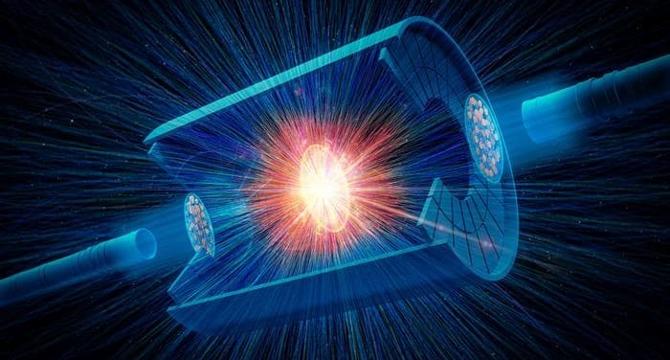Physicsworld
1M
246

Image Credit: Physicsworld
Nuclear shapes revealed in high-energy collisions
- Scientists in the STAR Collaboration have developed an innovative approach to investigate the shapes of atomic nuclei by colliding them at near-light-speed in particle accelerators like the Relativistic Heavy Ion Collider and LHC.
- Their approach offers unprecedented insight into nuclear structure and can deepen our understanding of strong nuclear forces and their role in the composition of neutron stars and evolution of the early universe.
- Scientists historically relied on two methods to learn about nuclear shapes, which mostly provided an averaged image of the nucleus and missed finer details.
- The new method involves smashing nuclei together at extremely high energies and analysing collision products to provide a more detailed snapshot of nuclear shape.
- By studying the speeds and angles at which particles are ejected, scientists can infer the shape of colliding nuclei.
- The initial success of this new method paves the way for more extensive applications, especially with nuclei whose shapes are not as well understood.
- Moreover, this technique could enhance our understanding of the quark-gluon plasma, a state of matter found in the cores of neutron stars and in the universe’s earliest moments.
- The approach holds potential for exploring finer details beyond the basic prolate or oblate figures, such as capturing rapid, transient fluctuations in soft nuclei.
- The researchers compared the findings with well-established techniques on nuclei with well-known shapes, validating the precision of this high-energy method.
- The technique could reveal complex triaxial shapes, offering unprecedented insights into the dynamic interactions among nucleons.
Read Full Article
14 Likes
For uninterrupted reading, download the app